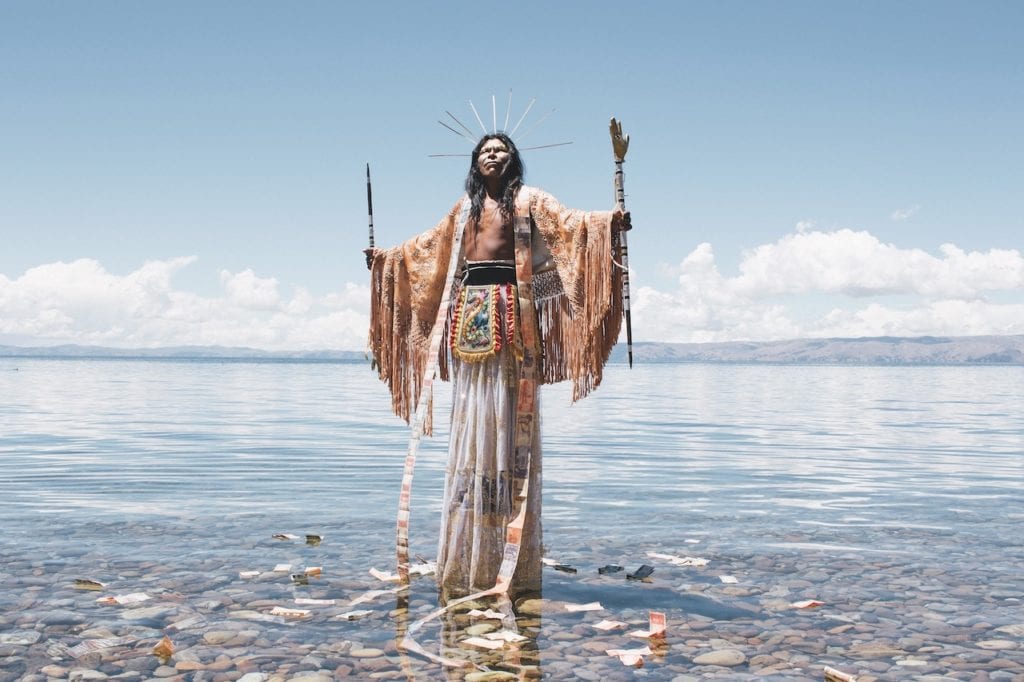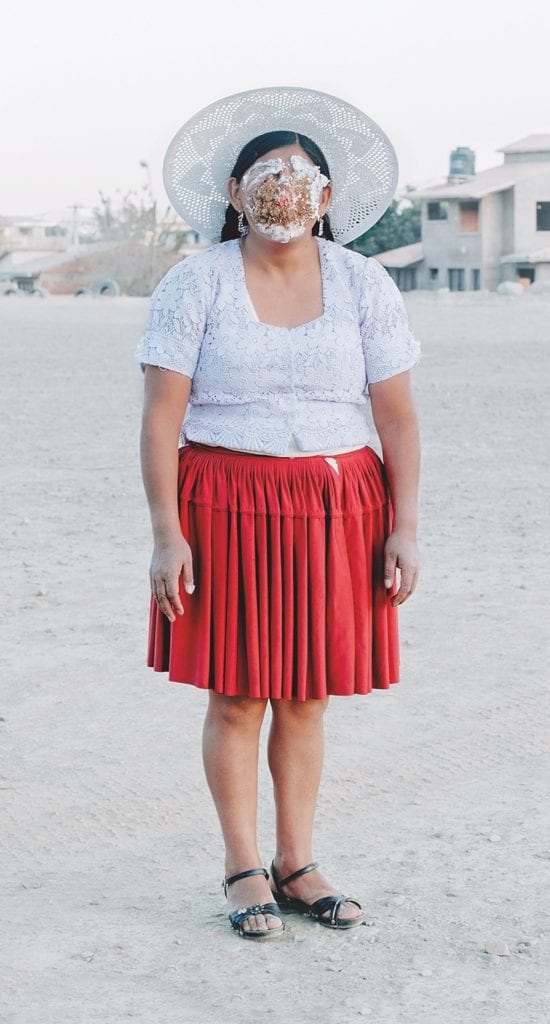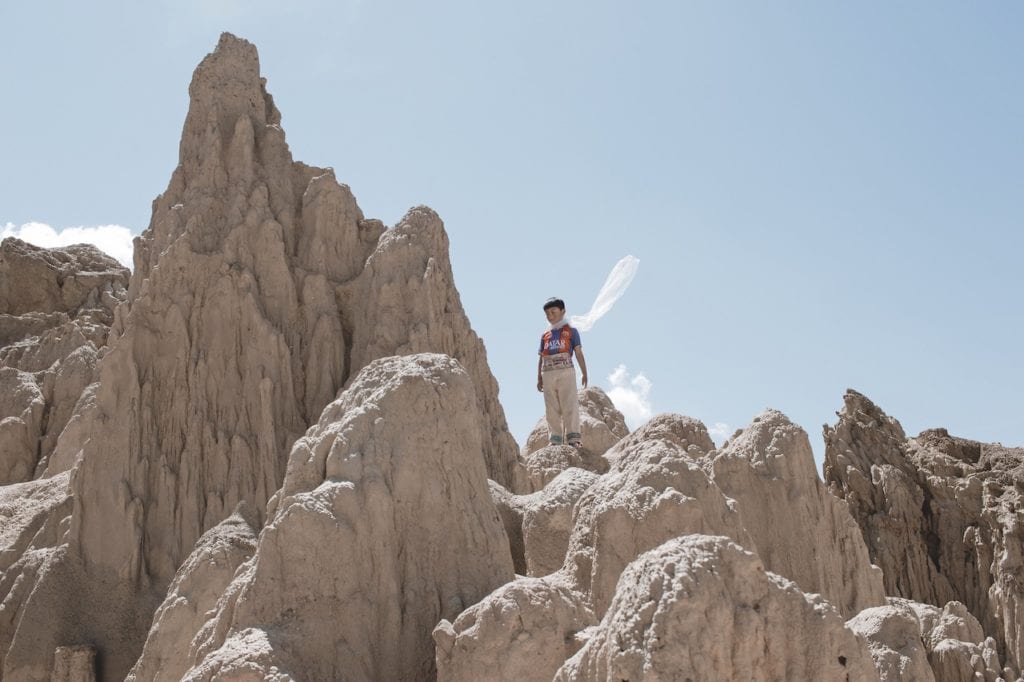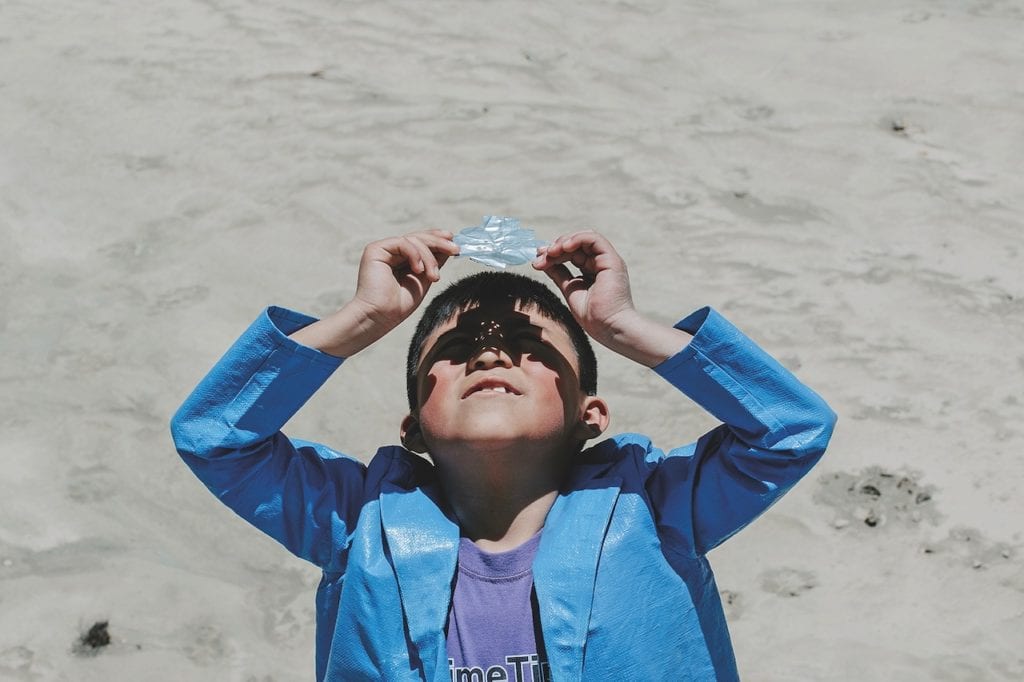Each year, British Journal of Photography presents its Ones To Watch – a group of emerging image-makers, chosen from hundreds of nominations by international experts. Collectively, they provide a window into where photography is heading, in the eyes of the curators, editors, agents, festival producers and photographers we invited to nominate. Throughout September, BJP-online is sharing their profiles, originally published in issue #7898 of the magazine.
Born in Cochabamba, a city in central Bolivia, and raised by devout Christian parents, River Claure was not aware of the cultural juxtaposition between his upbringing and his Aymara (an indigenous nation of the Andes) ancestry until he moved to Madrid in his twenties. It was here, in a city far from his own, that he began to understand the true nature of his identity. Though he had native ancestry, his life in Cochabamba had been filled with Western influence. “Living outside of the country was what awakened in me my ‘Chi’xi’ identity, and this period of reflection instigated my return to Bolivia, in order to explore, via the medium of photography, the questions I had about who I was and where I was from.”
In Aymaran, ‘Chi’xi’ translates as ‘grey’ and denotes an indeterminate colour. It also refers to a method of knitting whereby two colours thread together creating a third as a result. This third colour is what Claure understands to be his identity, and it has formed the basis of much of his work. It has put him in constant pursuit of narratives and visuals that speak to his perspective of home. “I remember one day searching ‘Bolivia’ on Google Images and being, unsurprisingly, presented with photos of indigenous people, coca leaves, llamas, Aguayo [a traditional fabric from the Andes], crafts and the carnival,” he says. “Though I was familiar with these symbols of Bolivia, I couldn’t really relate to them. It was then that I decided to use my camera to create images that, for me, gave a sense of belonging.”

One such resulting project, titled Warawar Wawa (‘Son of the Stars’ in Aymaran), uses this notion of Chi’xi as its catalyst. In this series, Claure seeks to recontextualise the classic story of The Little Prince, a novella by Antoine de Saint-Exupéry written in 1943. The book tells the story of a pilot who, after crash landing in a desert, encounters a boy from another planet who shares with him the wisdom born of his travels through space. The pilot, who is also the narrator of the tale, tells the reader that when he was young, he noticed that adults lacked imagination. The boy agress, also finding this to be true from his encounters with adults throughout his journey.
In Claure’s series, we see him explore this reluctance of broadening horizons, but this time in the context of Bolivian identity. Ethnonationalist agendas, which have taken hold in Bolivia over the last decade, have sought to deny the presence of the West in the country, and to maintain a limiting and unimaginative national image of tradition. But in Warawar Wawa, Claure shows modern-day Bolivia for what it really is – a merging of the two. We see this notion symbolised in the decorative clothing of his subjects, juxtaposing the old and the new, the native and the foreign. “The greatest act of decolonisation is not the denial of Western influence in Bolivia, but the embracement of the fact that its people are the fruit of a cultural juxtaposition,” he says.

This contrast is also present in his series Jinetes del Apocalipsis (‘Riders of the Apocalypse’), which takes inspiration from the eponymous Four Horsemen, who are figures in Christian faith appearing in the New Testament’s final book, the Book of Revelation. The images are foregrounded by the biblical “riders”, which here are represented by members of the indigenous Chiquitano community and set against the jungles of eastern Bolivia. Each rider represents themes from the original text: victory, war, hunger and death.
In these photographs we can see the influence of Claure’s studies, which drifted from the performing arts to design and then finally to photography. His desire to create worlds that fire the imagination, and his experience with set design come into play. The masks are reminiscent not only of Bolivian folklore, but also of theatre and the stage. As always, he encourages us to look past the ordinary and the traditional, and to view our histories in a new light. In his photos, he creates the change that he wants to see – a Bolivia reinvigorated, respectful of its past, aware of its present, and dreaming, wide-eyed, of its future.


